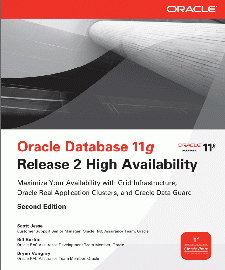Oracle Database 11g Release 2 High Availability, an Oracle Press publication that came out in March, examines the high accessibility characteristics in Oracle Database 11g R2 and its affiliated tools. Scott Jesse, the co-author pictured to the left, converses in this Q&A about what high accessibility entails and the new characteristics that advance high accessibility in Oracle DB. Jesse is the clientele support older supervisor for the Oracle RAC Assurance Team. The other authors are Bill Burton and Bryan Vongray, who are both Oracle RAC Assurance Team members.
What does high accessibility mean?
High accessibility fundamentally entails get access to to the facts and numbers by the users. They don’t care where it’s approaching from. They just anticipate get access to to data. We cited in the publication that this is alike to closing in a lamp. You just anticipate it to proceed on. You don’t concern about what’s going on in the back end.
So then what does high accessibility signify in the back end?
You’ve got to confirm you’re arranged for diverse types of failures. You have to design for human mistake, for hardware mistake, for an proceed of God. You have to have redundancy constructed in. You have to anticipate the unexpected. You can wish for the best but you have to design for the worst.
When persons believe of high accessibility and Oracle, they normally believe of Oracle RAC. But are there modes to legitimately boost high accessibility in single-instance Oracle DB? What are they?
Yes, there are. RAC is decisively a base for high accessibility but it isn’t the be-all end-all. You can still defend yourself without RAC by utilising Data Guard, by producing certain you have a good backup scheme utilising flashback technology.
There are third-party high-availability devices out on the market. What are the pros and cons of an Oracle shop taking up third-party HA tools?
In the publication we conspicuously concentrated all on the Oracle side. The pro there is you get better integration of the stack. I believe you get better support from a lone vendor because they have a better comprehending of your stack.
But you can use other tools. GoldenGate is a good demonstration but now Oracle owns GoldenGate. Another is SharePlex, which values replication to supply high availability. With those, you can duplicate to isolated sites that don’t inevitably have the identical architecture. You can have one location running on Solaris and another running on Linux. That is the large-scale pro that I would glimpse from those kinds of tools.
What are two or three of the most significant new characteristics in 11g R2 that advance high availability?
The one that pops to brain is the Oracle HAIP (High Availability IP) functionality. This devotes redundancy of the interconnect. Previously we would depend on the functioning scheme to supply redundancy. It’s a distinct way to accomplish that redundancy and make it more seamless.
The proficiency to have server swimming pools is another. It permits you to more effortlessly add servers into the pool to avert contradictory penalties from flops if you misplace a node. There is a gray locality between scalability and availability. If the facts and numbers is prepared rapidly due to climbing matters, that sways availability.
Another characteristic is the automatic impede repair with Data Guard. If you have a prime and standby database, and it notices impede corruption on either database, it understands it has a good exact duplicate somewhere. So you can configure it to restore the awful impede with the good impede automatically.

No comments:
Post a Comment